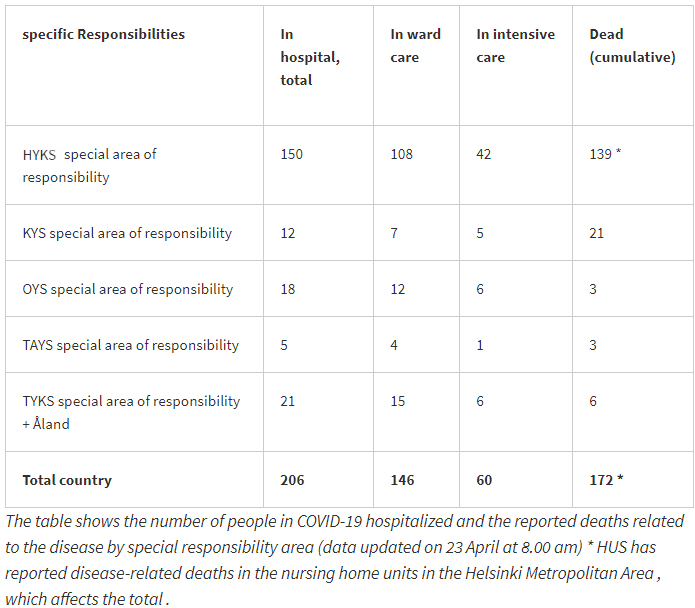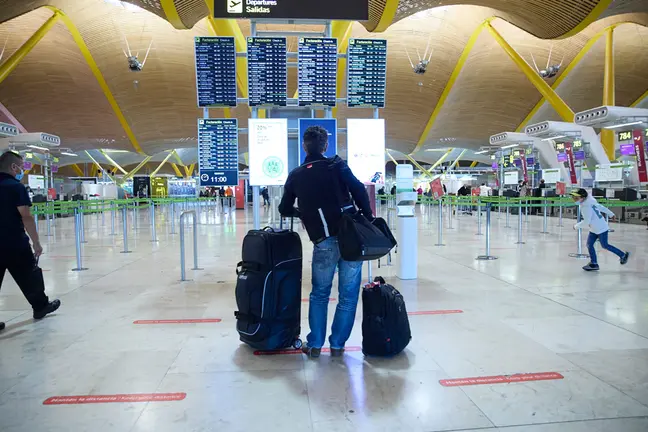The number of coronavirus (koronavirus, in Finnish) infections and deaths continue to rise in Finland.
The government has been repeating for days that the situation is improving and on Wednesday announced a further relaxation in some of the restrictions which have been imposed during the state of emergency. But both the number of deaths, and the fact that younger people are also dying of Covid-19, challenge that intended improvement.
"The efforts to curb the progress of the epidemic in Finland have been successful so far. Consequently, the Government considers that Finland can transfer gradually and in a controlled way from a situation in which in which there are extensive restrictive measures in society to one in which management of the epidemic is at an enhanced level, in line with the Communicable Diseases Act," the Government Communications Department said on Wednesday evening in a press release.
However, the daily data about new infections and deaths seem to contradict the official speech. On Thursday, the Finnish National Institute for Health and Welfare (THL in its Finnish acronym) reported 155 new laboratory-diagnosed infections (this figure was 115 more in the previous day) and 23 more deaths.
To date, 4,284 coronavirus cases and 172 deaths have been reported in the country.
However, these data do not reflect the whole extent of the tragedy in Finland. As in many other countries, controversy arise last week after some public authorities like the Helsinki-Uusimaa hospital district questioned the way fatalities are counted.
Until this week, THL only reported about the deaths which occurred in hospitals, ignoring dozens of fatalities recorded in Finnish nursing homes. But since last Tuesday, also deaths in the nursing homes of the capital area are added to the account. Still, remains open the possibility of lots of unreported deaths from elderly homes in other provinces.
Health authorities have made a huge effort to increase sampling (on Thursday +2,500 tests were reported), but there may be lots of unreported infections in Finland, since people with mild symptoms are not generally tested. Sampling is generally limited to risk groups, mainly health care workers.
Younger people among the dead
The health agency has disclosed a few details regarding the age of 119 of the dead. And for the first time, people who are younger than 40 years are included in the list.
According to THL, in the age groups 30-39, 40-49 and 50-59 "there are less than five deaths in each." However, exact numbers for each group are not specified.
There are also 8 deaths in the 60-69 age group, 25 in the 70-79 group, 52 in the 80-89 group and 29 people in their 90s.
54% of the dead are men and 46% are women. The median age of the dead is 84 years.

Source: THL.
New deaths all in Helsinki
Helsinki-Uusimaa remains the epicenter and region hardest hit by the epidemic. According to official figures, to date, 2,855 cases of Covid-19 have been found in the capital metropolitan area. Of them, 1,592 in the city of Helsinki.
Of the 23 deaths reported on Thursday, 21 occurred in the Helsinki metropolitan area (HYKS), where so far the vast majority of fatalities (139) have been recorded. Helsinki-Uusimaa is also the region with the highest incidence of infections: 169.3 cases per 100,000 inhabitants. This rate has been also raising steadily since the epidemic began.
The other 2 deaths reported on Thursday occurred in the Oulu (OYS) and Tampere (TAYS) hospital areas.
The region with the second highest incidence of the virus is North West Finland (Länsi Pohja), at the Swedish border, which has 152.6 infections per 100,000 inhabitants.
63 in intensive care units
On Thursday, the official number of patients hospitalized due to coronavirus was 206. And the number of people admitted to intensive care units was 60.
In relation to the total Finnish population (5,543,233), the average incidence rate is 77 cases per 100,000 inhabitants.
According to a preliminary estimate by THL, there are at least 2,000 people who may have already recovered from the disease. This assessment is updated by THL in its reports twice a week.
To date, Finnish laboratories have taken samples from approximately 71,000 people.










